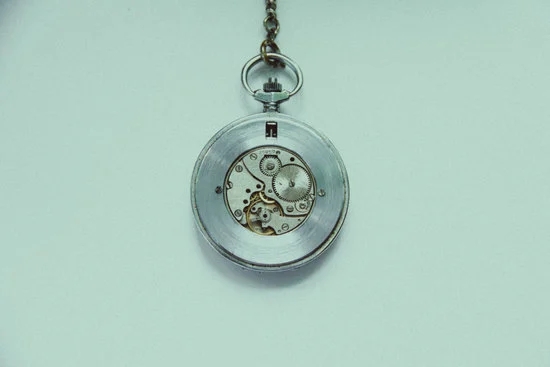The history of Ireland is rich with tradition, culture, and art, and its jewelry is no exception. The Jewelry History of Ireland offers a captivating journey through the centuries, showcasing the unique styles, symbols, and influences that have shaped Irish jewelry into what it is today. From early Celtic designs to modern fusion styles, the evolution of Irish jewelry reflects the country’s dynamic history and cultural heritage.
Early Celtic jewelry holds a significant place in the history of Ireland’s adornment traditions. The intricate knotwork and symbolic motifs of ancient Celtic jewelry continue to inspire contemporary designs, making it an essential chapter in the story of Irish jewelry. The influence of Christianity on Irish jewelry further demonstrates the intertwining of religion and art, creating distinct pieces that reflect both faith and craftsmanship.
As we delve deeper into the Golden Age of Irish Jewelry during the 18th and 19th centuries, we discover a time when exquisite designs flourished, reflecting prosperity and creativity. This era laid the foundation for renowned Irish styles and symbols that have stood the test of time.
The revival of Irish jewelry in the 20th century to present day introduces us to contemporary designers who honor tradition while embracing modern trends, resulting in a vibrant fusion of old and new. Join us as we embark on this exploration of Irish jewelry – a testament to its enduring legacy throughout history.
Early Celtic Jewelry
The history of Celtic jewelry in Ireland dates back to the early Iron Age, around 600 BC. The Celts were skilled craftsmen who created intricate designs with symbolic meanings. Their jewelry was often made from materials such as gold, silver, bronze, and even glass. The designs featured intricate patterns inspired by nature, animals, and geometric shapes that held deep spiritual significance for the ancient Celts.
Some of the most iconic symbols found in early Celtic jewelry include the triskele, which represents the concept of triplicity in both nature and human existence; the spiral, which symbolizes growth and development; and the famous Celtic knot, with its endless loops representing eternity and interconnectedness. These symbols were not only decorative but also held great cultural and spiritual importance for the Celts.
Celtic jewelry was often worn not just for adornment but also as a form of protection or to signify social status within the community. The craftsmanship and artistry of early Celtic jewelry are still admired today, with many contemporary Irish jewelry designers drawing inspiration from these ancient pieces to create modern interpretations that pay homage to their rich cultural heritage. Below is a list of some notable examples of early Celtic jewelry:
- Torcs
- Lunulae
- Brooches
- Armlets
- Rings
The Influence of Christianity on Irish Jewelry
When Christianity arrived in Ireland in the 5th century, it brought with it a new era of artistic expression that greatly influenced the design and creation of Irish jewelry. The fusion of Celtic styles with Christian symbolism resulted in unique and exquisite pieces that reflected the spiritual beliefs of the time.
The influence of Christianity on Irish jewelry can be seen in the incorporation of religious symbols such as the Celtic cross, which became a popular motif in jewelry design. This symbol, characterized by a ring surrounding the intersection of the vertical and horizontal beams, was often adorned with intricate patterns and engravings, showcasing the craftsmanship and dedication of Irish artisans.
Furthermore, during this period, monastic settlements became centers for metalworking and jewelry production. Highly skilled craftsmen created stunning pieces using techniques such as filigree and enameling, producing items like brooches, pendants, and chalices that were not only decorative but also used for religious purposes. These timeless creations are a testament to the craftsmanship and artistry of early Irish jewelers.
The influence of Christianity on Irish jewelry continues to be felt today, with many modern designers drawing inspiration from traditional religious imagery and incorporating it into their contemporary designs. This timeless fusion of spirituality and artistry has contributed to the enduring legacy of Irish jewelry throughout history.
The Golden Age of Irish Jewelry
During the 18th and 19th centuries, Ireland experienced a flourishing period in the realm of jewelry making, with exquisite craftsmanship and distinct styles emerging. This era marked a significant turning point in the history of Irish jewelry, as it saw the rise of intricate designs that reflected both traditional Celtic motifs and influences from European art movements.
One notable characteristic of Irish jewelry during this time was the extensive use of precious metals such as gold and silver. The skilled artisans of Ireland showcased their expertise in metalwork by creating stunning pieces adorned with gemstones, intricate filigree work, and delicate engravings. These creations not only served as adornments but also held symbolic meanings derived from Celtic mythology and spirituality.
The influence of historical events and social changes also left an indelible mark on Irish jewelry during this period. The Irish rebellion against British rule in the late 18th century fueled a sense of national identity, which is reflected in some jewelry pieces featuring symbols of patriotism and pride. Furthermore, the emergence of the Victorian era brought about a shift in design aesthetics, leading to a blending of traditional Celtic motifs with elements inspired by romanticism and nature.
The Golden Age of Irish Jewelry in the 18th and 19th centuries represents a pivotal time when the craftsmanship, symbolism, and cultural significance of Irish jewelry reached new heights. These timeless pieces continue to be cherished today for their beauty, historical value, and rich connection to the heritage of Ireland.
Famous Jewelry Styles and Symbols in Irish Culture
Often recognized for its intricate and symbolic designs, Irish culture has a rich history of jewelry that is deeply intertwined with its folklore and traditions. From ancient Celtic symbols to modern interpretations of traditional designs, Irish jewelry has always been a reflection of the country’s heritage.
Ancient Celtic Symbols
One of the most iconic aspects of Irish jewelry is the use of ancient Celtic symbols, which date back to around 800 BC. These symbols, such as the Trinity knot, the Claddagh ring, and the Celtic cross, have deep spiritual and cultural significance in Irish tradition.
The Trinity knot, for example, represents the Father, Son, and Holy Spirit in Christianity, while the Claddagh ring symbolizes love (the heart), friendship (the hands), and loyalty (the crown). These symbols continue to hold special meaning for the people of Ireland and are often incorporated into contemporary jewelry designs.
Emeralds and Shamrocks
Another prominent feature in Irish jewelry is the use of emeralds and shamrocks. The emerald has long been associated with Ireland due to its lush green landscapes, and it is often used in traditional jewelry pieces as a nod to the country’s natural beauty. Additionally, the shamrock-a symbol of luck-frequently appears in Irish jewelry designs as a way to pay homage to Ireland’s rich folklore and superstitions.
Influence of Nature
Irish culture places a strong emphasis on nature and its elements, which is reflected in many traditional jewelry styles. Pieces often incorporate motifs inspired by local flora and fauna such as leaves, flowers, animals like birds or wolves. This connection with nature adds an organic and timeless quality to Irish jewelry that continues to captivate individuals with a penchant for all things Irish.
The incorporation of these famous styles and symbols in Irish culture not only adds depth and meaning to each piece but also serves as a representation of Ireland’s enduring legacy in both history and contemporary fashion trends.
The Revival of Irish Jewelry
The history of Irish jewelry is a rich tapestry that has evolved over centuries, with each era leaving its own unique mark on the art form. The 20th century marked a significant revival of traditional Irish jewelry, as artisans and designers sought to celebrate and preserve the country’s cultural heritage. This period saw a renewed interest in ancient Celtic designs, as well as the incorporation of modern techniques and materials.
During the early 1900s, renowned Irish jewelry designer Mairéad de Bláca played a pivotal role in reintroducing traditional Celtic motifs into contemporary jewelry pieces. Drawing inspiration from ancient manuscripts such as the Book of Kells, de Bláca skillfully integrated intricate knotwork and spiral patterns into her creations, sparking a renewed fascination with Ireland’s artistic legacy.
In addition to the resurgence of Celtic designs, the 20th century also witnessed the emergence of innovative Irish jewelry designers who embraced modern influences while remaining true to their heritage. One such figure is Geraldine O’Rourke, whose avant-garde approach to traditional Irish symbols has garnered international acclaim. O’Rourke’s bold fusion of ancient Celtic imagery with contemporary aesthetics has redefined the perception of Irish jewelry on a global scale.
| Irish Jewelry Designer | Contribution |
|---|---|
| Mairéad de Bláca | Reintroducing traditional Celtic motifs into contemporary jewelry pieces. |
| Geraldine O’Rourke | Fusing ancient Celtic imagery with contemporary aesthetics. |
Notable Irish Jewelry Designers and Their Contributions
Throughout the jewelry history of Ireland, there have been numerous talented designers who have made significant contributions to the craft. One such notable figure is Geraldine O’Meara, known for her exquisite Celtic-inspired designs that seamlessly blend traditional motifs with modern aesthetics. O’Meara’s work has gained international recognition, and her pieces are highly sought after by collectors and enthusiasts of Irish jewelry.
Another prominent designer is Brian de Staic, whose creations are deeply rooted in the rich heritage of Ireland. De Staic’s jewelry often features intricate knotwork patterns and symbols from ancient Celtic mythology, making each piece a reflection of the country’s cultural identity. His innovative approach to incorporating traditional elements into contemporary designs has earned him a distinguished reputation in the world of Irish jewelry.
In addition to O’Meara and de Staic, Sorrell Brooke is another renowned Irish jewelry designer who has left a lasting impact on the craft. Brooke’s distinctive style draws inspiration from the rugged landscapes and natural beauty of Ireland, resulting in breathtaking pieces that evoke a sense of timeless elegance. Her use of precious metals and gemstones reflects a deep appreciation for the country’s natural resources, further adding to the allure of her creations.
These are just a few examples of the many talented Irish jewelry designers who have shaped the industry with their creativity and ingenuity. Their contributions have not only elevated the status of Irish jewelry on the global stage but also played a crucial role in preserving and celebrating the rich artistic heritage of Ireland through their exceptional craftsmanship.
Modern Trends in Irish Jewelry
In recent years, there has been a resurgence of interest in traditional Irish jewelry, with many designers and artisans embracing the rich history and symbolism of Celtic designs while also incorporating modern trends and techniques. This fusion of tradition and contemporary styles has resulted in a diverse range of jewelry that appeals to both traditionalists and those looking for unique, fashion-forward pieces.
Traditional Symbols With a Modern Twist
One of the most notable trends in modern Irish jewelry is the reinterpretation of classic Celtic symbols in a contemporary context. Traditional motifs such as the Claddagh ring, Trinity knot, and Celtic cross are being reimagined in sleek, minimalist designs that are perfect for everyday wear. These updated interpretations allow wearers to honor their heritage while also reflecting their personal style.
Incorporating New Materials and Techniques
Another aspect of the modernization of Irish jewelry is the use of new materials and innovative techniques. While traditional metals like gold and silver remain popular, many designers are incorporating alternative materials such as wood, enamel, and even recycled materials to create eco-friendly pieces. Additionally, advancements in technology have enabled artisans to experiment with new forms of craftsmanship, such as 3D printing and laser engraving, resulting in intricately detailed pieces that push the boundaries of traditional jewelry-making.
Global Influences on Irish Jewelry
As Ireland continues to be an integral part of the global community, modern Irish jewelry is not immune to outside influences. Contemporary designers are drawing inspiration from international design trends, resulting in pieces that seamlessly blend elements of Irish tradition with current fashion movements. This fusion allows Irish jewelry to appeal to a wider audience while still retaining its distinct cultural identity.
The fusion of tradition and contemporary styles has not only breathed new life into Irish jewelry but has also ensured its relevance in today’s rapidly evolving fashion landscape. As designers continue to push boundaries and explore new possibilities, it’s clear that the legacy of Irish jewelry will endure for generations to come.
Conclusion
Irish jewelry has a rich and enduring history that spans thousands of years, from the early Celtic period to the present day. The influence of Christianity, the golden age of Irish jewelry in the 18th and 19th centuries, and the revival of traditional designs in the 20th century have all contributed to the unique and distinctive styles that are recognized and cherished today.
The history of Irish jewelry is not just about decorative adornment; it also reflects the cultural, spiritual, and symbolic traditions of Ireland. From ancient Celtic knots and crosses to Claddagh rings and shamrock motifs, each piece tells a story and carries with it a deep sense of heritage. This connection to tradition continues to inspire modern trends in Irish jewelry, as designers blend age-old symbols with contemporary styles to create pieces that are both timeless and relevant.
The enduring legacy of Irish jewelry throughout history is a testament to its significance in both Ireland’s cultural heritage and the global fashion industry. As new generations continue to embrace their roots and seek out unique, meaningful pieces, it is clear that the influence of jewelry history of Ireland will continue for many years to come.
Whether as a symbol of love, luck, or simply admiration for its beauty, Irish jewelry holds a special place in the hearts of many around the world.
Frequently Asked Questions
What Is Ireland Known for Jewelry?
Ireland is known for its distinctive and beautiful Celtic jewelry, which often features intricate designs inspired by ancient Irish art and mythology. These pieces are often handcrafted and can include symbols like the Claddagh, Trinity Knot, and Celtic cross.
What Jewelry Did Celts Wear?
The Celts wore a variety of jewelry, including brooches, armlets, necklaces, and rings. Their jewelry was often made from materials such as gold, silver, and bronze, and featured elaborate designs inspired by nature, animals, and Celtic symbols.
What Do the Symbols on History of Ireland Rings Mean?
The symbols on the history of Ireland rings hold significant meaning. The Claddagh symbol represents love (heart), loyalty (crown), and friendship (hands). The Trinity Knot symbolizes eternal life and the interconnectedness of the mind, body, and spirit in Celtic tradition. These symbols carry rich historical and cultural significance in Irish heritage.

Welcome to my jewelry blog! My name is Sarah and I am the owner of this blog.
I love making jewelry and sharing my creations with others.
So whether you’re someone who loves wearing jewelry yourself or simply enjoys learning about it, be sure to check out my blog for insightful posts on everything related to this exciting topic!





